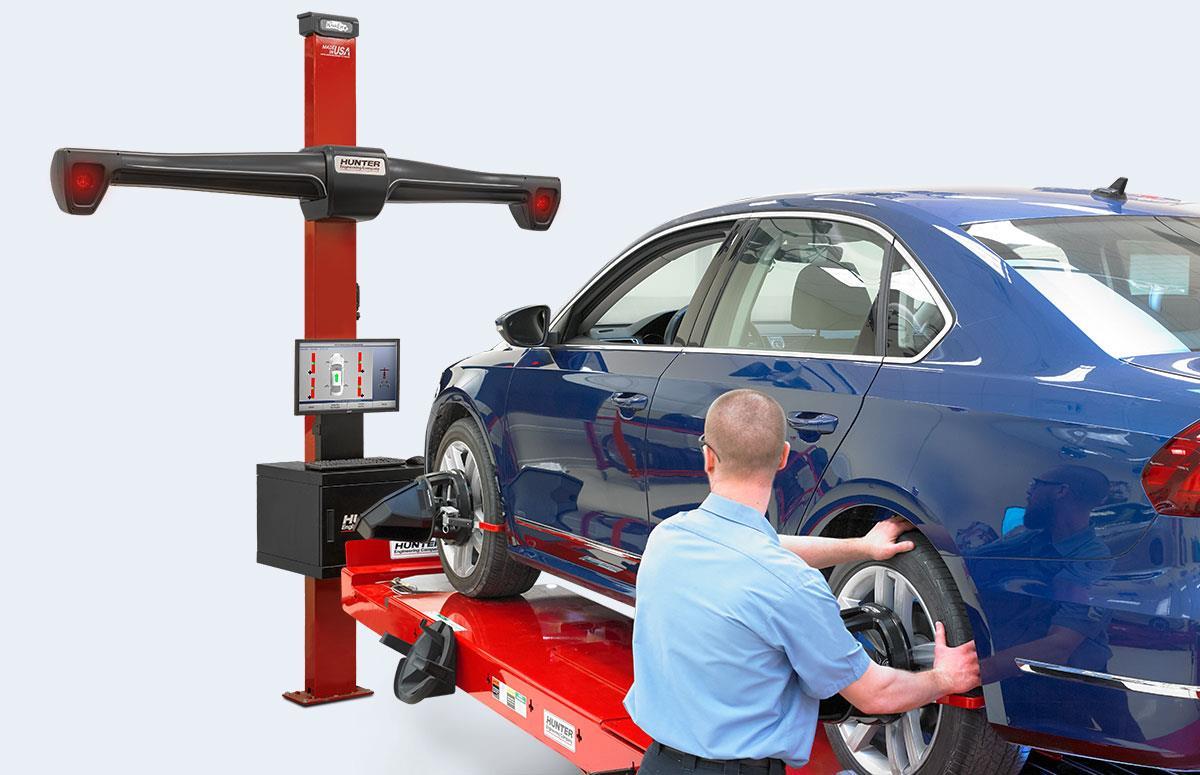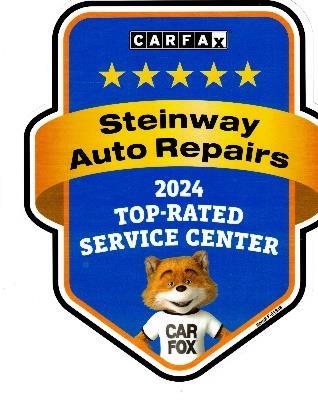The Importance of Precise Wheel Alignments: How Automation Is Changing Vehicle Safety and Performance

In the world of automotive maintenance, wheel alignment is one of those services that often gets overlooked until it starts costing drivers money, comfort, and safety. A properly aligned vehicle doesn’t just handle better; it also extends the life of your tires, improves fuel efficiency, and ensures your vehicle operates at peak safety. With today’s advances in automated alignment technology, achieving perfect precision is faster, more consistent, and more reliable than ever before.
Whether you visit a car repair shop Astoria or anywhere else in Queens, understanding how automated wheel alignment systems work—and why they matter—can help you make better maintenance decisions for your vehicle.
Why Automated Wheel Alignments Are More Precise Traditional wheel alignment required manual measurements and
adjustments. While skilled technicians could produce accurate results, human error and equipment calibration inconsistencies often led to small deviations. Those deviations, over time, can result in premature tire wear, uneven handling, and poor fuel economy.
Automated alignment systems eliminate these variables. Using advanced lasers, cameras, and computerized sensors, they measure wheel angles down to fractions of a degree. The system provides real-time digital readouts, ensuring pinpoint accuracy for camber, caster, and toe angles. Modern alignment racks can even detect frame irregularities and suspension issues that manual checks might miss. An auto mechanic Queens like the ones at our repair shop favor automated alignment systems for their precision.
These automated systems are not just about precision they’re also about safety. A properly aligned car maintains optimal contact between the tires and the road, which means better braking, stable cornering, and improved overall control. On wet or slippery roads, that level of accuracy can make the difference between a smooth stop and a dangerous skid.

Common Wheel Alignment Problems and Their Causes
Even with the best alignment technology, the real-world conditions your vehicle faces daily can throw those settings off. Here are some of the most common alignment problems, their causes, and how they can be fixed.
1. Toe Misalignment
Cause:
Toe misalignment occurs when your tires are angled inward (toe-in) or outward (toe-out) instead of pointing straight ahead. Hitting curbs, potholes, or speed bumps too hard can knock your suspension slightly out of place, changing the alignment.
Symptoms:
You may notice uneven tire wear especially feathering on the inside or outside edges. The steering wheel might feel off-center, and your vehicle may pull slightly to one side while driving straight.
Remedy:
A precision alignment using an automated system ensures each wheel is adjusted according to manufacturer specifications. Regular checks especially after hitting a significant road hazard—can prevent long-term tire and suspension damage.
2. Camber Misalignment
Cause:
Camber refers to the tilt of your wheels when viewed from the front of the vehicle. Negative camber (tilted inward) or positive camber (tilted outward) can result from worn suspension parts, bent struts, or rough road impacts.
Symptoms:
You might see uneven wear on one side of the tire tread or notice that the vehicle leans slightly during turns. In severe cases, handling can feel unstable or “loose.” At our center for auto repair Queens, our mechanics find that misaligned wheels are usually the cause for uneven wear on the tires.
Remedy:
Camber issues often require suspension component inspection and
potential replacement. Automated alignment systems can precisely measure the camber angle and restore it to the correct factory setting something that manual tools can struggle to match with such precision.
3. Caster Misalignment
Cause:
Caster affects steering stability and cornering balance. When the steering axis tilts too far forward or backward, it can make steering feel heavy or unstable. This type of misalignment is often caused by worn control arm bushings, collision damage, or frame distortion.
Symptoms:
If your car feels like it’s wandering on the highway, requires constant correction, or the steering wheel doesn’t return easily after a turn, caster may be to blame.
Remedy:
Because caster adjustments can influence other angles, using an automated system is crucial. It allows the technician to adjust caster, camber, and toe simultaneously to maintain balance and ensure optimal handling.
4. Thrust Angle Misalignment
Cause:
The thrust angle describes the direction the rear wheels are pointing relative to the vehicle’s centerline. If one of the rear wheels is out of alignment, the car may “dog track,” meaning it moves slightly sideways as it drives. This is often caused by potholes, curb strikes, or minor accidents that shift the rear suspension.
Symptoms:
You might notice your steering wheel is off-center even when driving straight or that your vehicle feels as though it’s pulling diagonally.
Remedy:
An automated alignment system measures all four wheels relative to the
car’s geometric centerline. This allows for accurate rear suspension corrections that ensure your car drives perfectly straight, reducing drag and tire wear.
The Benefits of Regular Wheel Alignment
Beyond improving driving comfort and safety, regular alignments have long-term benefits that make them one of the most cost-effective maintenance tasks you can do.
1. Extended Tire Life: Even minor misalignment can reduce tire lifespan by thousands of miles. Proper alignment ensures even tread wear.
2. Better Fuel Efficiency: When wheels are misaligned, your tires drag instead of roll freely, forcing the engine to work harder. Correct alignment reduces resistance and saves fuel.
3. Improved Handling and Safety: A properly aligned car responds predictably in emergency maneuvers, especially when braking or turning.
4. Reduced Strain on Suspension Components: Misalignment can put extra stress on shocks, struts, and bearings, leading to premature wear.
Drivers who maintain regular wheel alignment—especially after replacing tires or suspension parts experience smoother rides and fewer mechanical surprises down the road.
The Role of Technology in Modern Alignment
Automated wheel alignment systems have revolutionized the service process. Not only do they reduce human error, but they also provide detailed reports showing before-and-after measurements. These reports help customers see exactly what was adjusted and why, creating transparency and confidence in the service.
Shops that invest in this technology demonstrate a commitment to accuracy and safety. Our mechanic shop for auto repair Astoria uses advanced digital alignment equipment. Our technicians value precision and customer trust.
In areas like Queens and Astoria, where city driving conditions and potholes are part of daily life, wheel misalignment can happen faster than most drivers realize. Regularly checking your vehicle’s alignment at a reputable auto mechanic Astoria can prevent long-term damage and keep your car performing safely.
When to Get a Wheel Alignment
It’s wise to have your wheel alignment checked every 6,000 miles—or sooner if you experience any of the following:
• Your vehicle pulls to one side while driving.
• The steering wheel vibrates or feels off-center.
• You’ve hit a large pothole or curb recently.
• You’ve replaced tires or suspension components.
• You notice uneven or rapid tire wear.
If any of these symptoms sound familiar, schedule a wheel alignment Astoria or your local area to correct the issue before it leads to larger, more expensive repairs.
Automated wheel alignment technology represents one of the most significant advancements in modern automotive maintenance. It ensures unmatched precision, enhances safety, and saves drivers money in the long run. With computerized sensors and digital accuracy, even the smallest misalignments can be detected and corrected before they cause serious problems.
Whether you’re a commuter navigating the busy streets of Queens or a family driver cruising around Astoria, keeping your vehicle properly aligned means smoother rides, longer-lasting tires, and a safer driving experience for everyone on the road.

The above content does not constitute advice for your individual vehicle, but is presented for informational purposes only. If your vehicle is having any issues, then seek the help of a professional mechanic.
